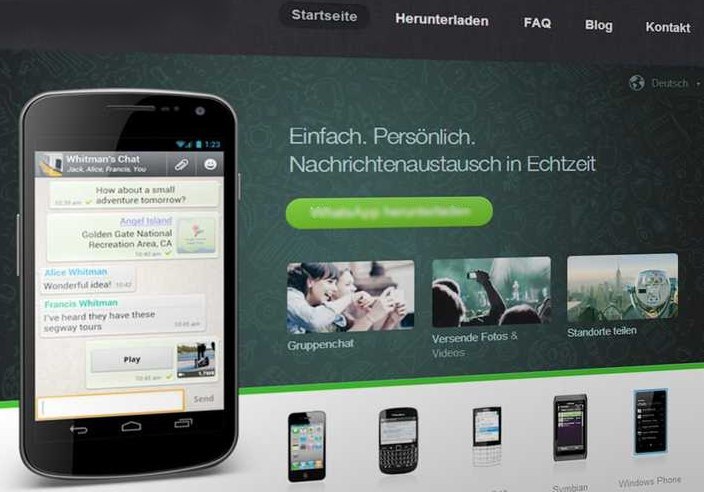The question of what basic content a company's online presence should contain is a concern for everyone from entrepreneurs and marketing managers to content managers. Over time, a basic concept has evolved that successful online presences adhere to. The focus here is less on dynamic content, such as new product offerings or company news, or even your business blog, but rather on a more static basic structure of the website. This basic structure is tried and tested and can be individually designed, organized, and implemented in terms of scope and design. It doesn't matter whether you use a Web Content Management System (WCMS), such as WordPress or Typo3, or a static, custom-built website.
 In addition to maintaining a basic structure for your company pages in areas such as parent level (parent directory) and child levels (sub-directories), the following menu items are proven to be useful:
In addition to maintaining a basic structure for your company pages in areas such as parent level (parent directory) and child levels (sub-directories), the following menu items are proven to be useful:
THE HOME PAGE
The Home Page is the first page that every website visitor (prospective customer) usually sees in their browser when accessing your internet address (domain). The homepage can therefore be considered your company's first digital "business card." This page is not only the first impression, but also a guide for the prospective customer. Studies have shown that large, concise headlines are more likely to be noticed and rewarded with interest than large amounts of text or subtext. Accompanying images (initial product or service presentation) can, when combined, encourage the visitor's initial individual interest and follow-up actions on your website. The goal here is to convey the image of a "professional" and their offerings in a specific field in brief. The upper area of the homepage (the "top view") plays a key role in this. Therefore, special attention should be paid to the design in this area.
In this area of the first glance, every interested party must be clear
- What this presentation is about
- What it offers and
- What individual benefits it has
If these aspects are not clarified, the visitor will most likely leave your website.
Under this top or header area, also known today as the "digital stage area," it is recommended to further expand on your offering in short, organized sections. However, not too much text is off-putting on the welcome page.
Determinants to be implemented by the site owner: Who am I? What do I offer? What characterizes my offering? What is the benefit for the consumer? What, if any, sets me and my offering apart from competitors (unique selling proposition)? Descriptive text should follow in smaller font and in logically arranged text fields, using short words. The other pages are suitable for a more detailed presentation.
This homepage or start area can also be divided into a table of contents, especially if the product portfolio needs to be divided into product/service areas due to its nature and scope.

CONTACT SITE
While it is legally required to provide a legal notice and privacy policy on dedicated pages in germany, a contact page is not only recommended but also common practice. Additional information about the person and contact person (for products and services) would seem distracting and superfluous on the aforementioned dedicated pages "as required." The contact page is particularly suitable for this, also because such information exudes professionalism from a business perspective. For example, a company's contact page can also include a contact person with a photo, for sales/services, logistics, support, and even management, building trust with potential customers. In good hands, everything is there, everything at a glance.
In addition to addresses, email addresses, and phone numbers, a contact form can be easily implemented here, allowing visitors to conveniently and easily enter their request or inquiry without having to launch their own email program. When it comes to individual form fields, less is more. Anyone who has to fill out an entire questionnaire would likely be put off. A simple form for sender information, a free text field, and a dropdown field for the request (predefined request labels), such as the choice between "Request," "General Contact," "Request a Callback," and so on, should suffice.
The contact page must be distinguished from the team page, where the entire company team is presented in a friendly group photo. Such a subpage can also be used to enhance the overall presentation, if the structure is similar.
Please note: A programmed contact form/mailing form must contain a brief privacy policy. More detailed explanations and discussions can be found on the pages dedicated to data protection.
ABOUT (US)
With the simple keyword "About" or "About [provider name]," you can delve deeper into your own company, venture, and its history. A biography of the founder (and successor, if applicable) should be included. How did you grow to this size? Why this profession? What has led you to (this) success in the past? Outlining "milestones" in your development not only builds respect and prestige, but also simply describes an "experienced" company. You can also include the history of who you have worked with in the past, who you may have helped achieve success, and which companies trust and rely on you.
LEGAL NOTICE and PRIVACY POLICY
 These pages are required by law. In Germany, this is based on the General Data Protection Regulation (GDPR) and the Telemedia Act (TMG). These pages should be placed in the footer of the website. Not only because this location has become established as standard over time, but also because regulations, on the one hand, and individual offerings and presentations, on the other, deserve to be separated.
These pages are required by law. In Germany, this is based on the General Data Protection Regulation (GDPR) and the Telemedia Act (TMG). These pages should be placed in the footer of the website. Not only because this location has become established as standard over time, but also because regulations, on the one hand, and individual offerings and presentations, on the other, deserve to be separated.
The company's branch address and the responsible person must be listed in the imprint. As well as the company form, commercial register entry (if applicable), and company tax number (VAT ID).
In the data protection section, the use and storage of data, including technical cookies, trackers, Google Analytics, etc., must be explained.
NEWS or BLOG
Do you regularly have news to share about your company or mission? This section is ideal. In the past, some companies placed these elements on the homepage. Over time, this practice has shifted away. Why should a first-time visitor, who is unfamiliar with your company or your website, immediately engage with your additions or new hires? Your company news is of particular interest to existing customers or creditors. Therefore, a separate section in this section is essential.
BLOGGING. Every internet user is familiar with this term today. This article format, in which aspects, concerns, and issues are actively discussed, has become a popular form of communication. General opinion formation, legislative changes, or product controversies are popular topics. Thus, such an integrated platform in your website is by no means a "must" and is not appropriate for all professions and business sizes. However, peripheral expertise in the form of a blog can wonderfully complement a larger corporate online presence, also for marketing reasons.
For a news section or blogging platform, it's important to ensure that metadata, such as meta descriptions and meta keywords, are designed for search engine optimization (SEO). These areas reflect the zeitgeist and can certainly lead visitors via search engines to your company presentation. This has a positive advertising and traffic effect.
REFERENCES
If not already addressed on the "About [...]" page, this section is ideal for advertising consolidation. List (former) existing clients with their slogan and logo. A brief description of what you have accomplished for the claimant could round out the items. It is recommended to obtain permission from the clientele for this, citing a successful collaboration. This section offers insights into your service portfolio and also contains an advertising effect.
FAQs
The famous "FAQs," the Frequently Asked Questions. It is ultimately thanks to English, the international language of the Internet, that the acronym "FAQ" has become established here in Germany and elsewhere. Regardless of the nationality of the website. These organized, yet specific question catalogs with expandable answers to your services, products, usage options, or payment methods, organized by level, are simply clear and answer most prospective customers' questions immediately – on a question and answer page. For products that require particularly detailed explanation, it is recommended to offer a special FAQ page for this purpose.
Digression: Home > LANDING PAGE
A homepage can be a so-called landing page. A page that serves as a special "hook page," which is specially designed and embedded for search engines and as part of backlink management (your page references to forums, chats, registers, guest books of other websites, etc.). However, this doesn't necessarily have to be the traditional homepage. For example, a special product/service with a stylish, large image, capitalized and concise headlines, and minimal additional text can serve as an additional landing page. This measure is derived from the (marketing) wisdom that a picture is worth more than words. This graphic can present an innovative object, an upcoming event, a technical result, a digital book you have written, or something similar. The goal of a landing page is simply to capture the attention of a prospective customer; coupled with the characteristic of exclusivity. The page visitor should perceive (unwritten) words such as "New now!", "Only here!" or "Exclusively for you!" The additional integration of form or email forms at the bottom of the page is a good way to encourage conversation. For example, in the form of a reservation or prospective customer form, or, of course, for inquiries about discount scales. Stay creative.
Differentiated landing pages for different technical traffic channels and target groups are also useful. Landing pages have a proven marketing effect and don't have to be displayed at the beginning of the prospect's discovery phase; they can also be placed downstream of the "product/service sheets" on your website.
